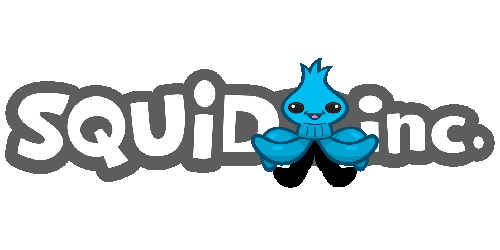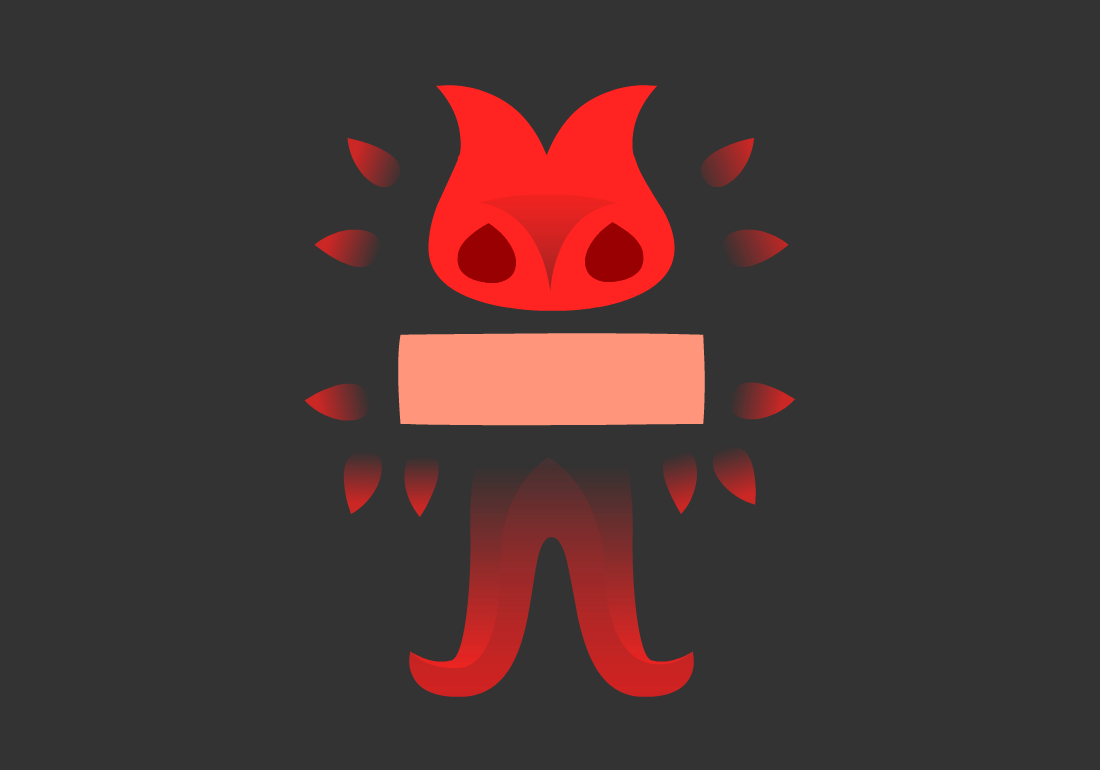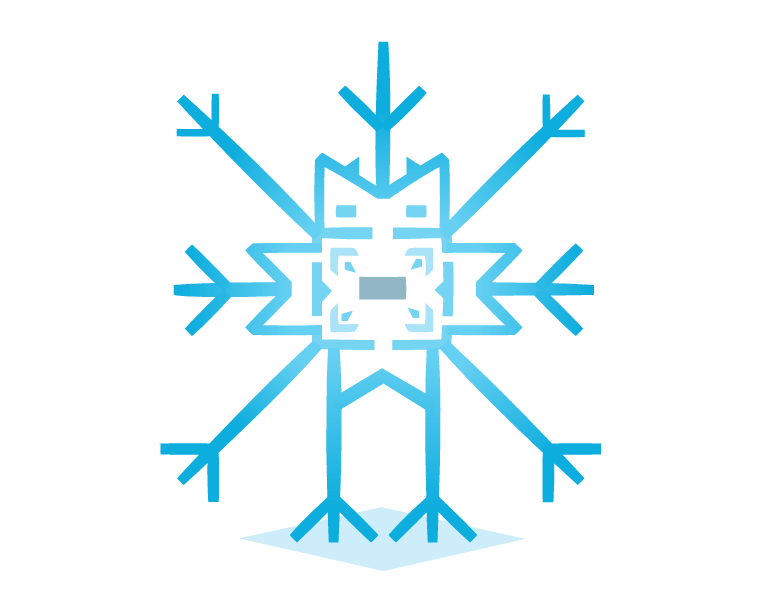McLuhan 02: Hot vs Cool Media
Marshall McLuhan described media as Hot or Cool.
He described Hot Media as high-definition; sharp and well defined. These had lots of information readily available, so a user needed little participation to be immersed in this type of content. Examples of Hot Media include movies and radio. Alternatively, Cool Media was low-definition, where information was less distinct. Here, a user had to work harder to scan what was available in order to make sense of the content, to ‘fill in the blanks’; little information needing lots of participation. The telephone and cartoons are seen as Cool Media (McLuhan, 1964).
The animations here use colour and movement to describe different creatures, who present or protect information; Hot Media as a warm, engaging invitation, and Cool Media as challenging protector.
The McLuhan character-design series (01-Media Ages; 02-Hot vs. Cool Media; 03-Four Laws)
Just as drawn models present complex information in simple forms (Schultz & Cobley, 2013), and prototypes are the embodiment of concepts and understandings (Wensveen & Matthews, 2014), animation can be used to clearly represent theory in novel ways. As a moving art-form, animation is perfectly suited to present & describe the actions (look, hear, retrieve, reverse, heat, cool) in McLuhan’s work, enhancing the transparency of each idea (Schlosser R.W. et al. 2012).
You can use the images in the McLuhan Sections of this website for your teaching and research, but please ensure you appropriately cite the author (Shaun Britton) and the website (Squidinc Studio).
McLuhan, M. (1964). Understanding media: the extensions of man (1st ed.). London: Routledge & Kegan Paul.
Schulz, P., & Cobley, P. (2013). Theories and models of communication (2nd ed.). Berlin: De Gruyter Mouton.
Schlosser R.W. et al. (2012). Animation of graphic symbols representing verbs and prepositions: effects on transparency, name agreement, and identification. J Speech Lang Hear Res. 2012 Apr;55(2):342-58.
Wensveen, S., & Matthews, B. (2014). Prototypes and prototyping in design research. In P. Rodgers & J. Yee (Eds.), Routledge Companion to Design Research (pp. 262–276).
hot media
Like a campfire in the dark, Hot Media grabs a viewer’s attention. To illustrate the idea, this concept-character invokes that warmth and contrast of light with the use of hot colours and iconography; the rectangular content at its centre easily accessible, requiring little participation from the viewer for complete immersion. The creature has large, owl-like eyes, as Hot Media typically immerses users with their sense of sight.
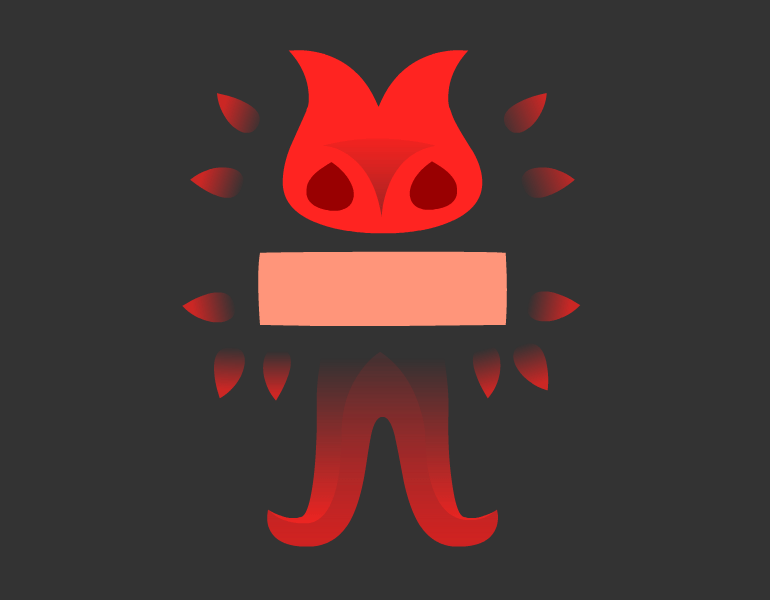
cool media
Cool media is represented here as a maze-like snowflake-creature that protects and obfuscates its inner content. Discerning the meaning of that icy media requires more participation from an outside user, using more senses to somehow navigate the space and discover its ‘secrets’. This creature has a variety of antennae-like structures, near its ‘ears’ and ‘head’, a visual clue to the many senses needed to discern meaning from this type of content.
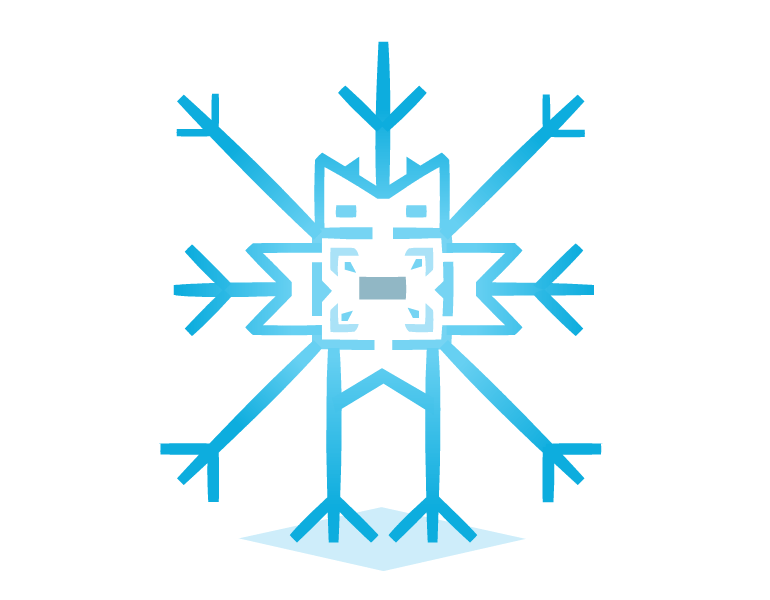
 Back to Work
Back to Work
